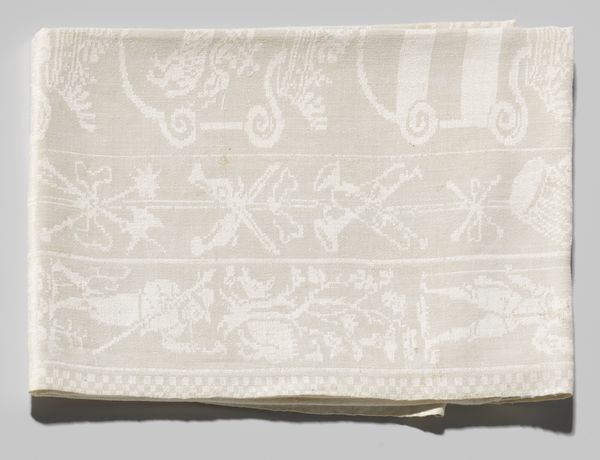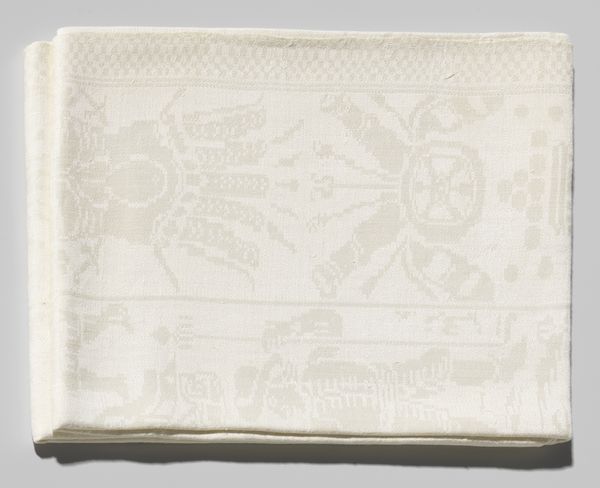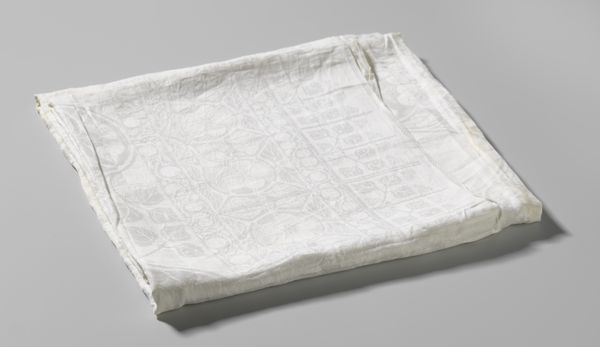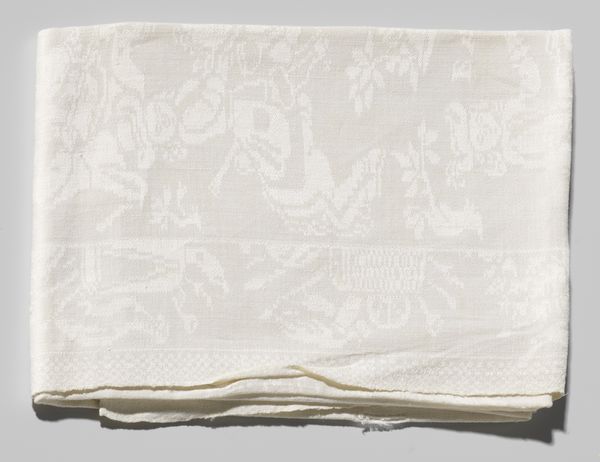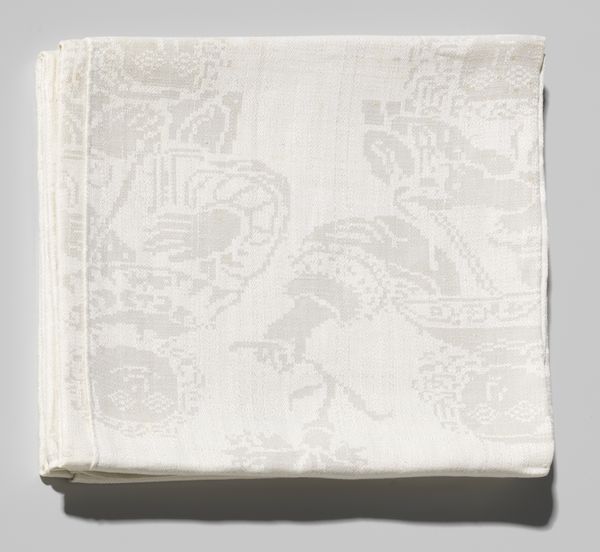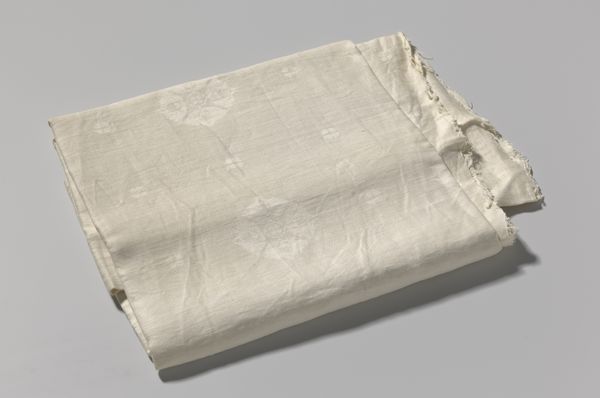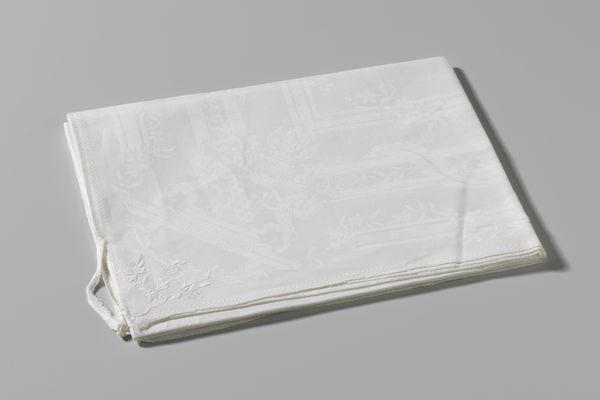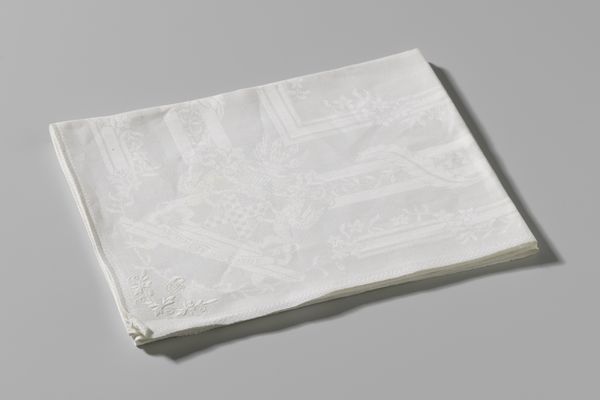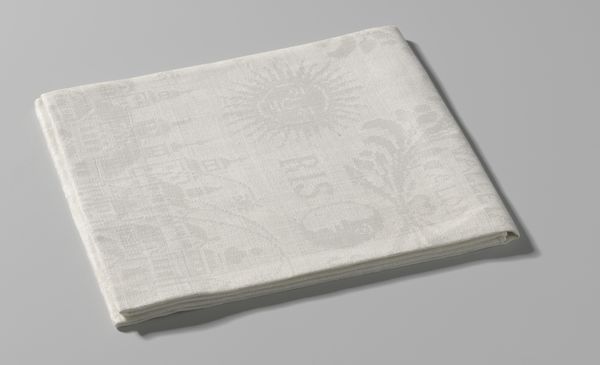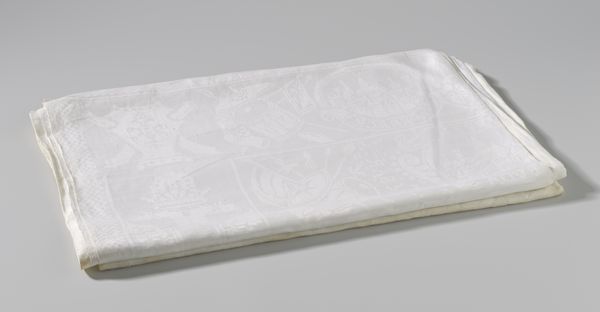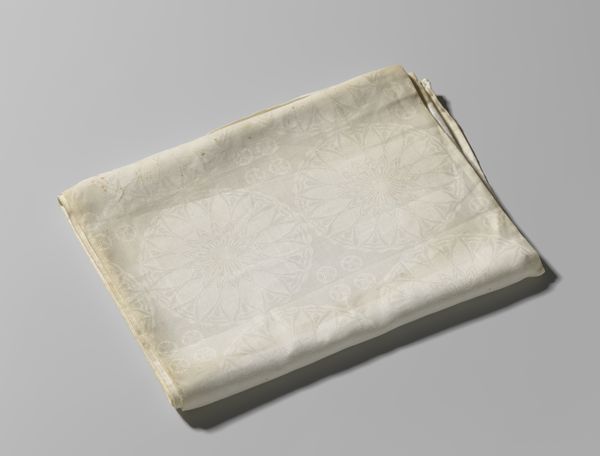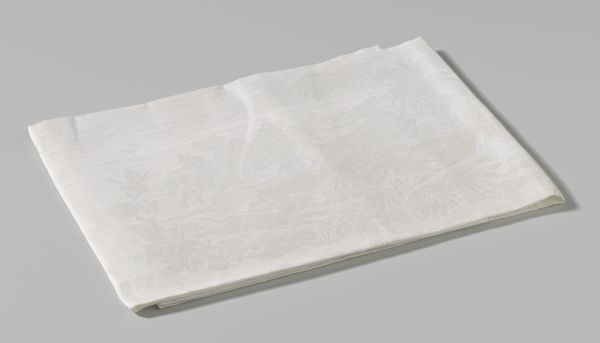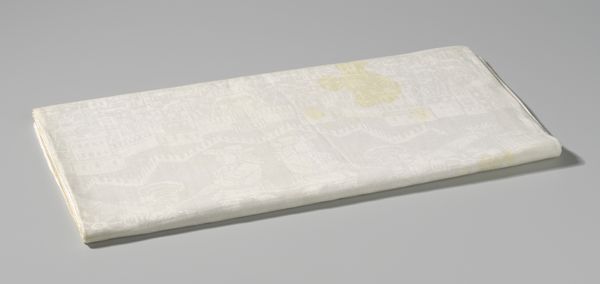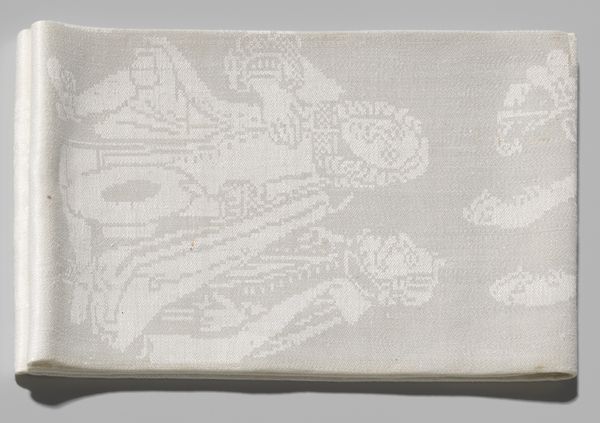
Servet met de wapens van Christiaan van Denemarken en Anna Katharina van Brandenburg 1602
0:00
0:00
passchierlammertijn
Rijksmuseum
drawing, print, textile
#
drawing
# print
#
pattern
#
textile
#
11_renaissance
#
fabric design
#
imprinted textile
Dimensions: length 94 cm, width 69 cm
Copyright: Rijks Museum: Open Domain
This linen damask cloth was made by Passchier Lammertijn, likely in the early 17th century. The process of creating damask involves a loom, which is used to weave intricate patterns directly into the fabric. Here, the arms of Christian IV of Denmark and Anna Katharina of Brandenburg are interwoven with scrolling foliage. This material has a subtle visual texture, achieved through a contrast of warp-faced and weft-faced areas, giving it a gentle luster. The complexity of damask weaving meant that it was often associated with luxury, and the cloth was usually commissioned by wealthy patrons. Its social significance resided in its use as a display of status, and this example is no exception. The labor-intensive process speaks to a culture of meticulous craftsmanship, one in which fine textiles held symbolic and economic value. Textiles like this invite us to reconsider the boundaries between art and craft. It prompts questions about labor, value, and the materials through which social identities are shaped.
Comments
No comments
Be the first to comment and join the conversation on the ultimate creative platform.
